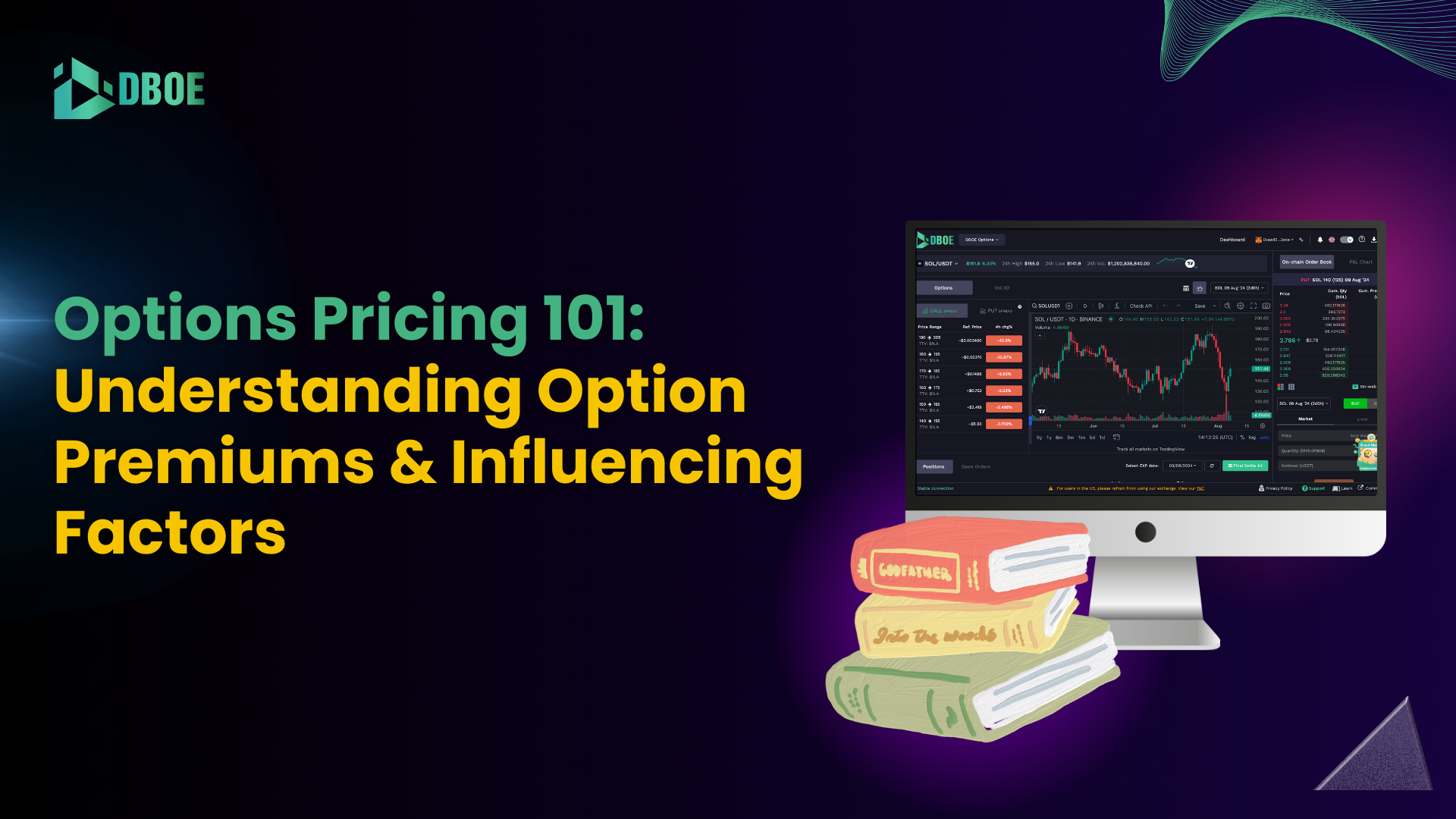The market is stabilizing after a few days of turbulence at the beginning of August. BTC is rising back to $56K after going as low as $52K, ETH is up to $2.5K, and SOL escapes the $136 dip and reaches $152 as of August. Combine this with the booming of options, creating more opportunities for investors. However, investors need to understand the fundamentals of options before stepping into the “game.” For today, DBOE will give you “Options Price 101”: Options Price (Premium), how it can be affected, and examples from DBOE.
Defining Option Pricing in Financial Markets
An option price, also known as an option premium, is the price a buyer pays to purchase an options contract. In financial markets, options are derivatives that give the buyer the right, but not the obligation, to buy (in the case of a call option) or sell (in the case of a put option) an underlying asset at a specified price, known as the strike price, within a particular time frame.
Understanding the Influencing Factors:
The premium consists of two main components: intrinsic value and extrinsic value. The intrinsic value is the difference between the underlying asset’s current price and the option’s strike price. However, this value only applies if it is a positive number; otherwise, it is zero. Extrinsic value, or time value, is the additional amount traders are willing to pay over the intrinsic value, reflecting the probability of the option becoming profitable before its expiration.
Several factors affect the price (premium) of an option:
- Underlying Asset’s Price:
- As the underlying asset’s price fluctuates, it directly affects the premium of both call and put options. Specifically:
- Call Options: When the underlying security price increases, the premium of the call option rises.
- Put Options: When the underlying security’s price decreases, the premium of the put option increases.
- As the underlying asset’s price fluctuates, it directly affects the premium of both call and put options. Specifically:
- Moneyness:
- Moneyness refers to the distance between the underlying security’s current price and the option’s strike price. This can be:
- In-the-money (ITM): When the underlying price is favorable relative to the strike price, the premium is high due to the intrinsic value.
- At-the-money (ATM): When the underlying price and the strike price are equal.
- Out-of-the-money (OTM): When the underlying price is unfavorable, the premium diminishes as it largely reflects time value with no intrinsic value.
- Moneyness refers to the distance between the underlying security’s current price and the option’s strike price. This can be:
- Time Until Expiration:
- The time value portion of the option premium decreases as the option approaches its expiration date. Options with a longer time until expiration have higher premiums due to the more significant uncertainty and potential for price movement.
- Implied Volatility:
-
- Implied Volatility (IV) gauges the expected future volatility of the underlying asset’s price. High implied volatility increases the extrinsic value of the option premium due to an enhanced chance that the option will end up in the money. Conversely, low implied volatility reduces the extrinsic value, diminishing the option’s premium.
- Regulatory Environment:
- The evolving regulatory framework around cryptocurrencies can introduce higher premiums due to uncertainty. Regulatory announcements can lead to sharp market moves, affecting premiums.
- Market Sentiment:
- Crypto markets are often driven by sentiment more than traditional financial markets. News, social media trends, and other sentiment indicators can swiftly affect option premiums, especially in short time frames.
- Liquidity and Market Depth:
- Lower liquidity in some cryptocurrency options markets can lead to higher premiums, and larger bid-ask spreads as traders demand compensation for the increased difficulty in entering and exiting positions.
Implementing with DBOE:
So that’s the basics; where can you look for the price of an option? When you enter https://dboe.exchange/, you then see this main screen (SOL/USDT will be used as an example):
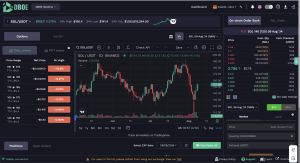
Figure 1. Main page of DBOE
On the left, you see options and a list of price ranges. The “Ref. Price” is the average bid and ask price, which will be mentioned later. It is also an excellent way to see the price movement of an options contract and how it is affected by the factors above.
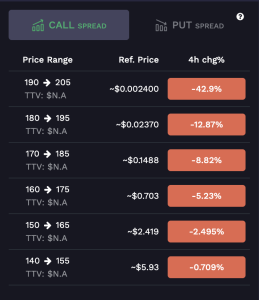
Figure 2. Options contracts, reference price, and 4-hour percent change on the left screen
However, if you want to be more specific about buy or sell options, DBOE has an easy way. On the same page as Fig.1, locate the buttons on the toolbar.
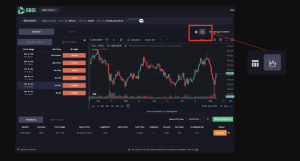
Figure 3. Switching to view the bid and ask price
The candlestick function is currently selected, allowing you to view the price movement with Tradingview API. Pressing the “table” button on the left will show you the order book, enabling you to see the bid and ask for the price. The bid price is the way to go if you want to buy. In contrast, the ask price will be the price you want to sell.

Figure 4. Example of the Order Book
Regarding options trading, mentioning trading at the market and limiting prices is crucial.
1. Trading at Market Order:
-
- In simple terms, you are agreeing to buy or sell a contract (or any other asset) immediately at the best available price in the market.
- To use that in DBOE, look at the bottom right of the page. This will allow you to buy the contract at the best price, saving you the most.
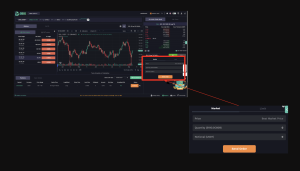
Figure 5. Market Price
2. Trading at Limit Order:
-
- When you have price speculation, the limit price allows you to set a price, and the order will be executed when a bid price matches the limit.
- To use this in DBOE, switch to the limit section at the bottom right of the page. Afterward, you can select the top 7 prices from the order book or set your own. The system will wait for 4320 minutes or about three days.

Figure 6. The top 7 of bid and ask price
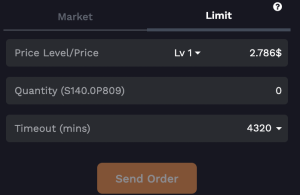 Figure 7. Limit Price
Figure 7. Limit Price
Now that the market is potentially looking better, investors should seize the opportunity to succeed with their portfolios. However, understanding the fundamentals is always essential, and DBOE wanted to deliver the best explanation to you!
——————————————————————————–
At DBOE, we provide comprehensive resources and support to help you navigate the complexities of options trading. We aim to make options trading more secure and accessible.
Start your options trading journey with DBOE today at: Website or Mobile app.
Disclaimer: The information in this article is not intended as investment advice. Cryptocurrency investment activities are not legally recognized or protected in some countries. Cryptocurrencies always involve financial risks.

